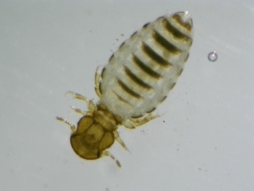Equine Lice: Not so lice to see you ..
- clwalne
- Apr 12
- 2 min read
What Every Horse Owner Needs to Know. A quick reference guide.
Lice in horses might be more common than you think and can cause a lot of discomfort for your horse, but with the right care, they can be effectively managed.
Horses of all ages can get lice, but they are more commonly found in young, older, or horses with compromised immune systems like those with Equine Cushing's disease.
What to Look For:
Itching & Scratching: Lice cause intense itching. If you notice your horse scratching excessively or rubbing its mane and tail, lice could be the culprit.
Hair Loss: In severe infestations, you may see patches of hair loss, particularly around the mane, tail, and withers.
Dandruff: Lice feed on the horse’s skin and can cause scaly, flaky skin, leading to visible dandruff.
Visible Lice: Look closely at the skin, particularly around the mane, tail, and chest area. Adult lice are about the size of a pinhead and can be seen moving.
How to Manage & Treat:
Consult Your Vet: Always check with your vet before starting any treatment to ensure it's the right course of action.
Topical Treatments: We recommend using a permethrin-based pour on treatment such as Switch. This is available at the practice. There are many other products and formulations available, but speak to your vet first to decide the best treatment for your horse or pony. We advise repeating treatment 2 weeks later to kill newly hatched lice.
Environmental Clean-up: Lice can live in your horse's bedding and grooming equipment. Wash and disinfect their blankets, brushes, and stall thoroughly.
Isolation: If you have multiple horses, isolate the infected one to prevent the lice from spreading and treat all in contacts.
Prevention Tips:
Regular Grooming: Grooming your horse regularly helps you spot signs of lice early and keeps the coat healthy.
Routine Stall Cleaning: Keep your horse’s living area clean and dry. Lice thrive in warm, crowded environments.
Minimize Stress: Horses under stress are more likely to get lice and other skin conditions. Provide a comfortable, low-stress environment.
Check New Horses: Quarantine new horses before introducing them to your stable to ensure they’re not carrying lice.
With proper care and treatment, lice infestations are manageable, and your horse can return to its happy, healthy self!
If you're unsure or need help identifying lice, don’t hesitate to contact your veterinarian.







Comments